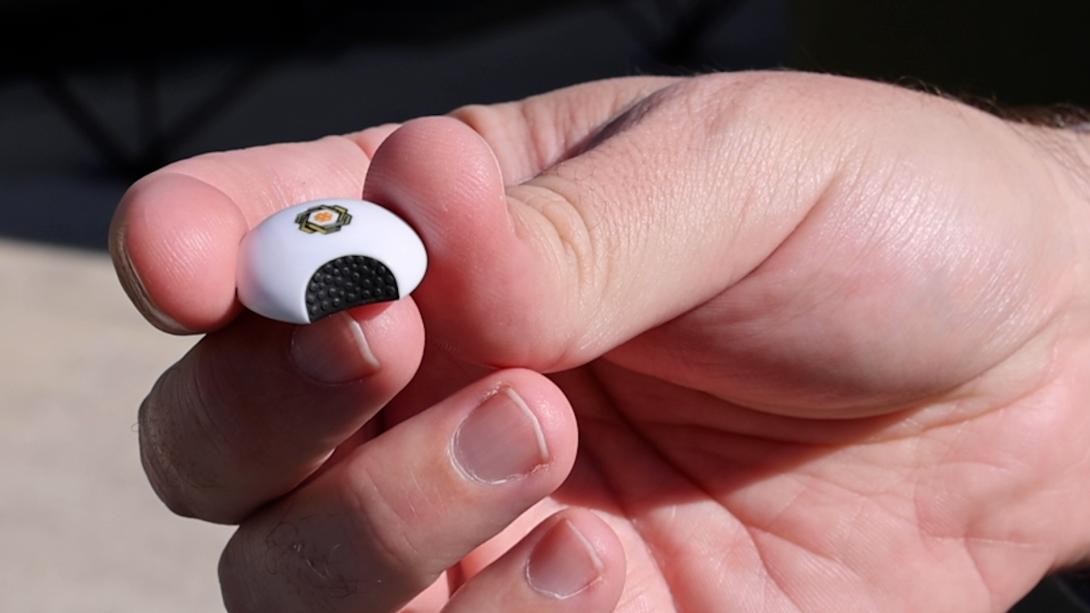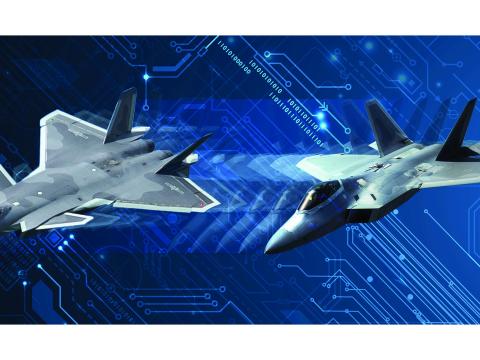Wearables Turn Military Training Into a High-Tech Race
In the ever-evolving landscape of military training and fitness assessments, wearable technology is emerging as a game-changer, offering comprehensive performance monitoring and the potential to replace traditional tests.
“They can be used by Marines crawling through the mud, or people swimming, or running, or biking,” said Scott Burgett, senior director of health engineering at Garmin, a sports technology company.
The Taiwanese company and the U.S. Space Force (USSF) are conducting a fitness study to obtain a comprehensive fitness assessment among Guardians.
“This study will explore the usability, reliability and effectiveness of these devices while incorporating feedback from Guardians,” said James Christensen, a product line lead with the Air Force Research Laboratory (AFRL).
“The results will inform leaders about the role of wearable devices in proposed fitness strategies that may replace annual tests,” Christensen added.
Participants will be granted full compliance with their physical test requirements while minimal measurements are recorded. Stored data is untagged, meaning it is unattached to a name. While Guardians can follow their individual progress, the service is only able to access aggregated information.
One of the key cardiorespiratory indicators is VO2 Max, which is a measure of the body’s ability to deliver oxygen to muscles. The evolution in this figure is widely accepted as a health indicator.
“It’s just one metric that gets to the overall level of cardiorespiratory fitness and one metric that identifies the quantity and intensity of the physical activity,” Christensen explained.
There is a psychological effect when the measurement is recorded as part of a holistic program, including nutrition counseling and health coaching.
“You need to keep track of how you’re doing, and that’s what’s so motivating about our wearables. They are watches that people can see themselves improve with, take, for example, VO2 Max,” Burgett told SIGNAL Media in an interview.
The wearable’s function is to record the critical body statistics that will inform the algorithms that will return the key performance indicators needed. Still, the other data will remain disabled.


At the University of Minnesota’s Wearable Technology Lab, founder Lucy Dunne and co-director Brad Holschuh lead an effort to fill the gap between apparel and new technology.
“Clothing can be so much more than the passive covering that it’s always been,” Holschuh told SIGNAL Media in an interview.
Holschuh received his Ph.D. in aerospace engineering at the Massachusetts Institute of Technology, which was his introduction to wearable technology. “I think there’s a lot of really interesting parallels to the challenge of keeping astronauts healthy and productive in space, as it is sending soldiers into extreme environments here on Earth.”
With technologies that can now be tightened and fastened autonomously, Holschuh sees a lot of potential for warfighter use to help with efficiency, health and security. For example, a battlefield uniform that can automatically transform into a tourniquet in a catastrophic event is no longer an unlikely idea.
“The idea of a thing that you’re wearing being a living, interactive platform,” he said, “to me, redefines everything in how you think about wearable technology and even the design of functional clothing that you might wear.”
Additionally, wearables can record GPS positions, which are disabled in the case of the Guardians, according to the AFRL.
Once the vitals of a participant are recorded, the hardware company stops being responsible for its safety.
“We look at the potential vulnerabilities with architecture, specification and implementation, and then we identify what we can do to mitigate those vulnerabilities,” said Peter Mozloom, the AFRL cyber superiority mission area lead.
Data encryption and security comply with the federal government standards, according to the AFRL.
The study began in May 2023 and is expected to last two years. Upon completion, the Department of Defense (DoD) will better understand how continuous health monitoring compares to the current physical testing system.
Beyond working toward warfighter health, readiness may include other parameters, like stress levels, and third parties can build indicators that guide other relevant factors.
“The customer can do anything they want. They can hire a third party that’s an expert in fatigue management or an expert in disease detection, and they can write algorithms and do studies—do things downstream from us,” Burgett said.
Data outputs from wearables can be processed to produce other performance indicators.
“We can tell you about your sleep, about your stress, how well you’re training,” Burgett added.
While the USSF program generated media attention, the devices employed are for civilian use. While nonmilitary athletes can demand their wearables perform in challenging circumstances and environments, military wearable technology far exceeds this first approach by the DoD. According to figures compiled by Research and Markets, the military wearable technology market reached $6.88 billion in 2022 and is expected to climb to $14.34 billion by 2028.
This market estimation comprises many products in this category, including exoskeletons, smart textiles, ballistic protection and augmented reality systems. The research company did not provide an estimation for health-specific devices; still, the trend suggests a fast adoption rate for these gadgets.
Another device in this market stands out for its simplicity. It is a strip that sticks onto the skin over the heart of a warfighter, gathers information and connects to a cellphone using secure communications technology.
“This particular device can do a number of things, but one of many is to identify early signs of heat stress and heat illness,” said Maj. Nathan Fisher, USA, a senior scientist with the Joint Program Executive Office for Chemical, Biological, Radiological and Nuclear Defense.
The innovation was tested during Exercise Talisman Sabre 2023 in Australia, according to a release.
“It measures heart rate, heart rate variation, respiratory rate, pulse oxygen level activity and a few other physiological metrics that all come together in order to enable a predictive algorithm to analyze the data from that service member and then alarm that individual or squad leader or medic to take a look at that person,” Fisher said.
The 2022 National Defense Authorization Act directed the DoD to produce a digital health strategy to incorporate new and emerging technologies. According to a report from the Government Accountability Office, the DoD has completed actions to address this, but this document remains unavailable.
Though the document will include innovations that exceed wearables, these devices are expected to receive special attention in this document, according to a report by the Center for New American Security.





